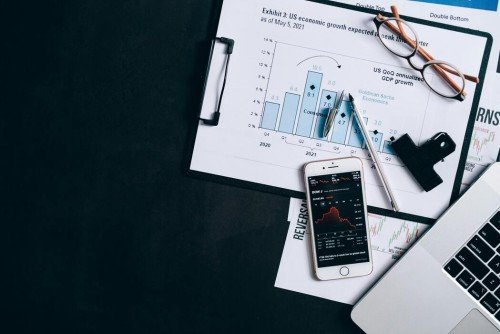Rethinking Growth Beyond GDP

For decades, governments have relied on Gross Domestic Product (GDP) as the main measure of progress. Higher GDP has been equated with prosperity, stability, and success. Yet in today’s world, where climate change, biodiversity loss, and social inequalities are urgent realities, GDP alone tells an incomplete and often misleading story. A nation can grow its GDP while polluting rivers, degrading ecosystems, and fueling unsustainable consumption. What looks like progress on paper may, in fact, be undermining future well-being. That’s why policymakers, researchers, and communities are rethinking growth, moving toward green economy indicators that capture environmental, social, and economic dimensions together.
Why GDP Falls Short
GDP measures the monetary value of goods and services produced in an economy. It reflects activity but not sustainability. For example:
-
Oil spills raise GDP because cleanup costs count as “economic activity.”
-
Deforestation boosts GDP through timber sales, even as ecosystems collapse.
-
Rising healthcare costs from pollution-related diseases also inflate GDP.
By ignoring ecological limits and social equity, GDP rewards short-term exploitation at the expense of long-term resilience. This gap pushes governments to seek broader, greener metrics.
What Green Economy Indicators Add
Green economy indicators provide a more accurate picture of well-being. They integrate environmental health, resource efficiency, and social inclusion into economic analysis. Key examples include:
-
Carbon intensity of growth – how much CO₂ is emitted per unit of GDP.
-
Share of renewable energy – a measure of energy transition.
-
Green jobs created – employment linked to sustainable sectors.
-
Natural capital accounts – valuing forests, water, and soil as assets.
-
Social equity metrics – tracking who benefits from green investments.
When policymakers use such indicators, they can design strategies that balance growth with sustainability. Instead of chasing numbers, they pursue outcomes that truly improve lives.
A Policy Shift Already Underway
Several countries are leading this shift. Bhutan has long used its Gross National Happiness Index, which blends cultural, ecological, and social measures. The European Union is advancing its Beyond GDP agenda, while the United Nations supports the System of Environmental-Economic Accounting (SEEA), which integrates nature into national statistics. At the city level, municipalities measure air quality, green space per capita, and access to sustainable transport. These local indicators often drive practical innovations faster than national systems.
The Role of Communication and Inclusion
Developing robust indicators is only half the task. Policymakers must also communicate them effectively to citizens, businesses, and international partners. Indicators only matter if people understand them and use them to demand accountability.
This is where inclusive communication strategies matter. For instance, when governments present reports to multilingual audiences, such as international climate conferences or cross-border research forums, language accessibility becomes key. Increasingly, institutions rely on remote interpreting services to ensure diverse participants can follow discussions on green economy data in real time. By making indicator frameworks accessible across languages and cultures, remote interpreting services strengthen global collaboration. Without them, valuable ideas and strategies risk being lost in translation.
Green Indicators for Social Justice
Sustainability isn’t only about reducing emissions; it’s also about fairness. Indicators must highlight whether green policies benefit everyone, or only a privileged few. For example:
-
Do renewable energy subsidies help low-income households, or just wealthier ones?
-
Are green jobs accessible to women, youth, and marginalized communities?
-
Does public transport expansion serve all neighborhoods equally?
By embedding equity into indicators, governments can prevent “green growth” from widening inequality.
Linking Indicators to Real Action
A challenge with any measurement system is avoiding data for data’s sake. Numbers must guide policy choices. For example:
-
If carbon intensity isn’t declining, governments can accelerate renewable energy targets.
-
If natural capital accounts show rapid forest loss, policies can prioritize conservation.
-
If social indicators reveal gaps, investments can be redirected to underserved groups.
When decision-makers act on green economy indicators, they transform them from abstract metrics into real tools for change.
Business and Civil Society Contributions
Businesses also use indicators to measure environmental, social, and governance (ESG) performance. Investors increasingly demand sustainability metrics, rewarding companies that reduce emissions and support fair labor practices. Civil society organizations often push governments to adopt transparent green indicators. They use data to hold leaders accountable, publish alternative reports, and advocate for ambitious policies. By aligning efforts across government, business, and civil society, indicators gain legitimacy and impact.
Looking Ahead: Beyond GDP, Toward Balance
Rethinking growth is not about discarding GDP entirely but about placing it within a broader framework. A green economy is not “anti-growth,” but pro-sustainability. Indicators must help us answer not just how much we produce, but at what cost—and for whose benefit.
By adopting green economy indicators, policymakers can:
-
Recognize environmental limits.
-
Ensure economic resilience.
-
Promote fairness and inclusion.
-
Communicate transparently across borders, with the support of tools like remote interpreting services.
Conclusion
In 2025 and beyond, the measure of progress cannot be reduced to a single number. GDP may remain a useful statistic, but it should no longer dominate policy. Green economy indicators offer a smarter compass, guiding nations toward prosperity that is sustainable, equitable, and resilient. With the right data, inclusive communication, and international collaboration, governments can rethink growth in a way that benefits both people and planet. The future demands nothing less.